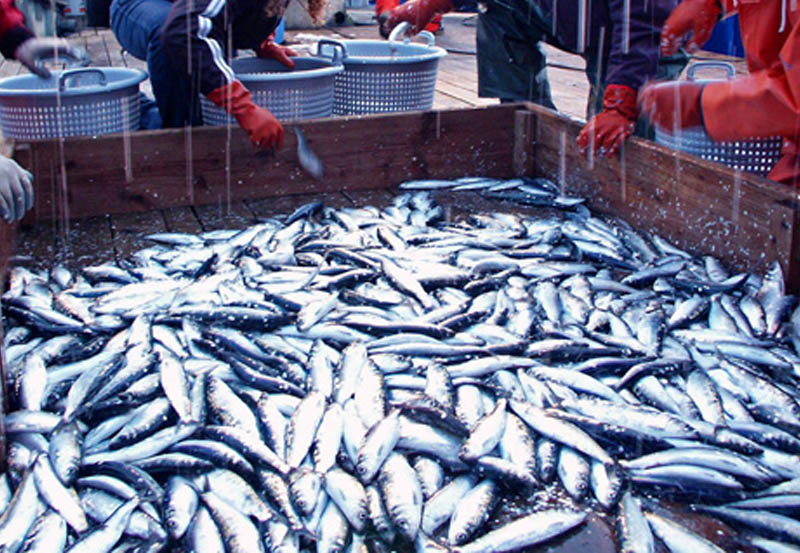The projected harvest in Alaska’s herring fisheries is expected to deliver the usual volumes of product into the market for 2018. Ex-vessel prices have rebounded slightly from the doldrums in recent years but remain at a fraction of what the fish once garnered when demand was high among buyers funneling the salted egg skeins to retail markets in Japan.
The Sitka sac roe guideline harvest level has been set at 11,128 tons. As in previous years, it has been established on an exploitation rate of 20 percent of a total biomass of 55,637 tons. The GHL for Togiak, meanwhile, is set at 16,829 tons for seiners and 7,212 tons for gillnetters.
Last year’s harvest in Togiak tallied up to 15,975 tons for the seiners, while a fleet of 15 gillnetters harvested only 1,428 tons of their 6,883-ton quota. Base prices for fishermen ran $100 per ton, with higher offers for roe recovery running more than 10 percent.
In the Sitka fishery, 48 seiners caught 13,923 tons of a 14,649-ton GHL, and the average roe recovery ran 11.4 percent. Processors paid $308 per ton, up slightly from the $250 per ton of the 2016 season.
Weight of the fish — and the subsequent size of their egg skeins — will again play a heavy hand in establishing market demand. The ripened egg skeins of fish weighing in at around 150 grams have found favor in Kazunoko markets in Japan through the years.
Weight and age composition of fish in the 2017 Sitka harvest ranged from 3–year-olds coming in at 77 grams to 8-year-olds weighing in at 175 grams. In 2017, the average weight of Togiak fish ran 378 grams while Canadian fish came in closer to 90 grams.
Given the various sizes of fish in its biomass, Sitka stands poised to deliver premium product to market in 2018.
“They try to fit ours between what they harvest in Canada and what they catch out in Togiak,” says Eric Conradt, an area management biologist in Sitka. “I think the 120- to 150- to 180-gram fish is what they’re looking for.”
The statewide average for ex-vessel herring prices took a nosedive from $420 per ton in 2012 to $100 per ton in 2014. For two years, processors set Togiak prices at $50 per ton. The statewide average rose to $160 per ton, according to most recent data from the Alaska Department of Fish and Game in 2016.







